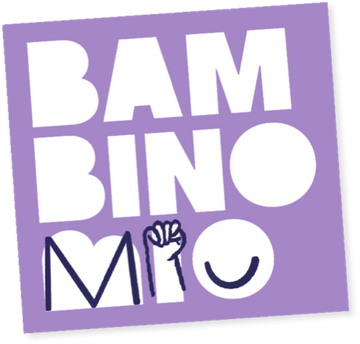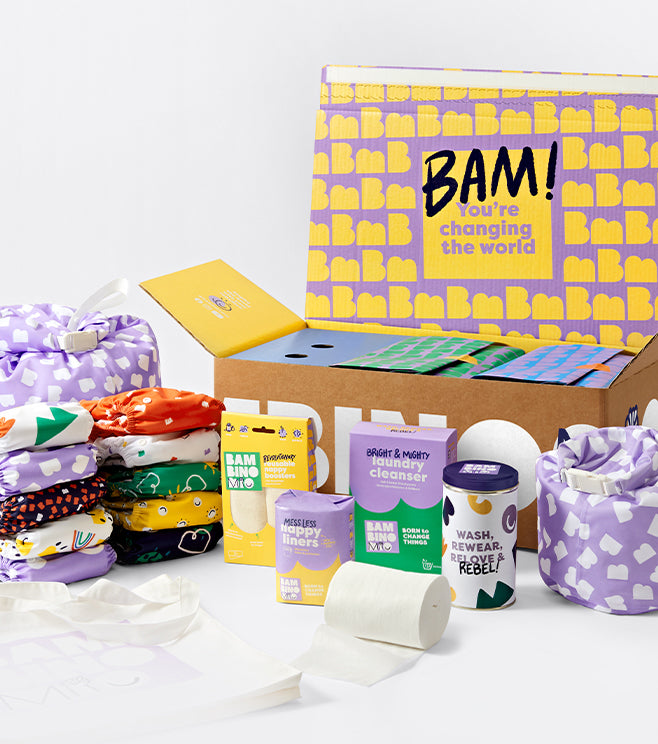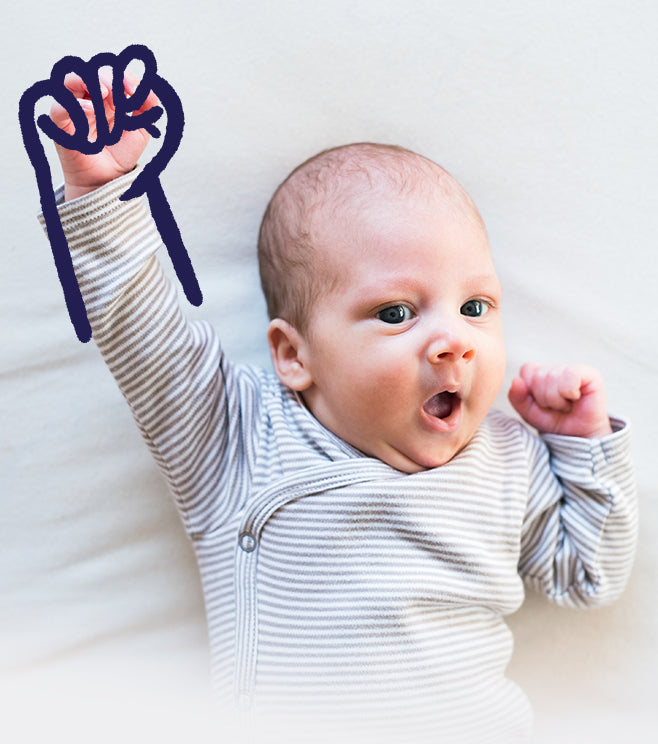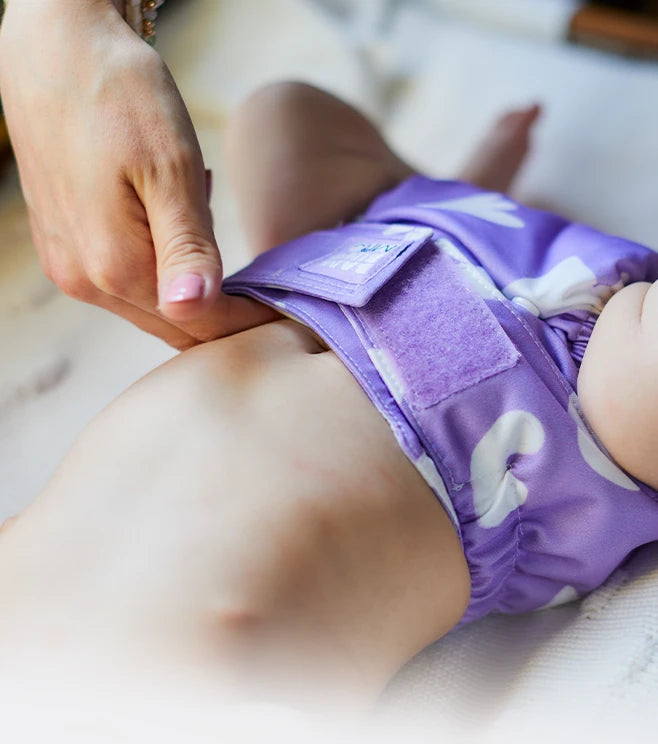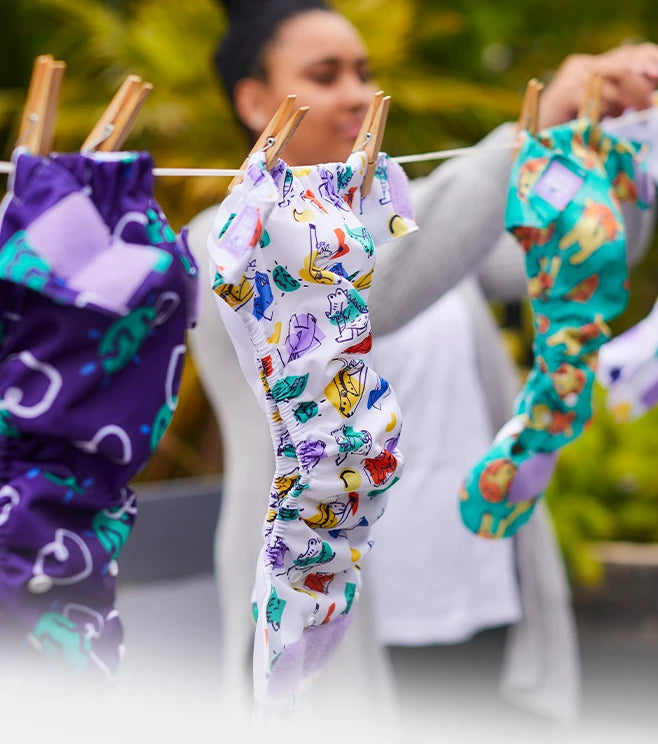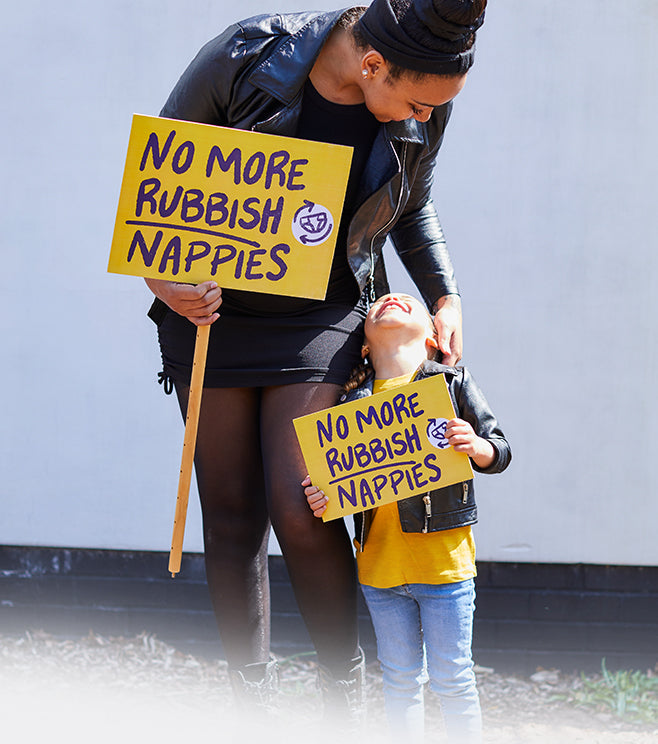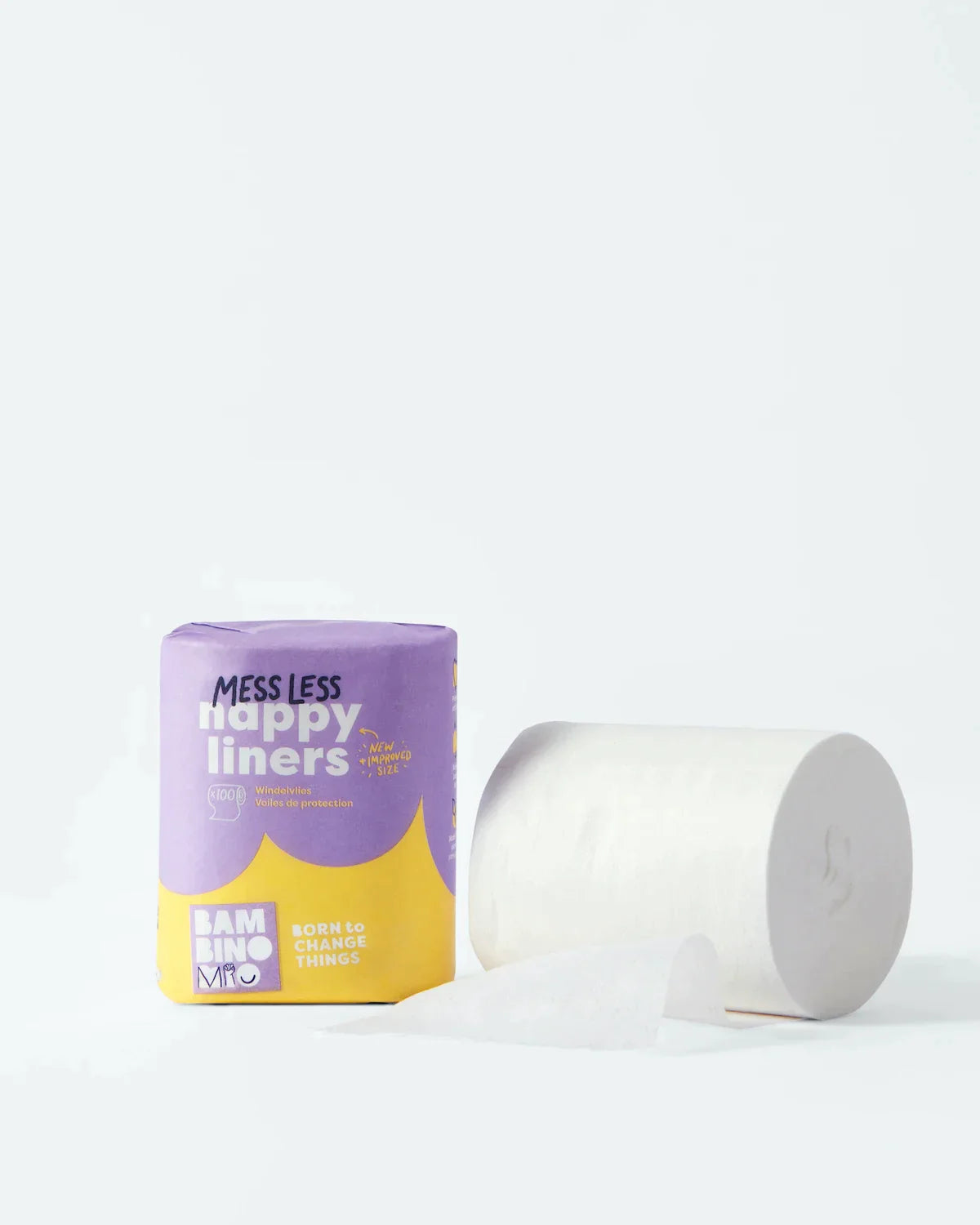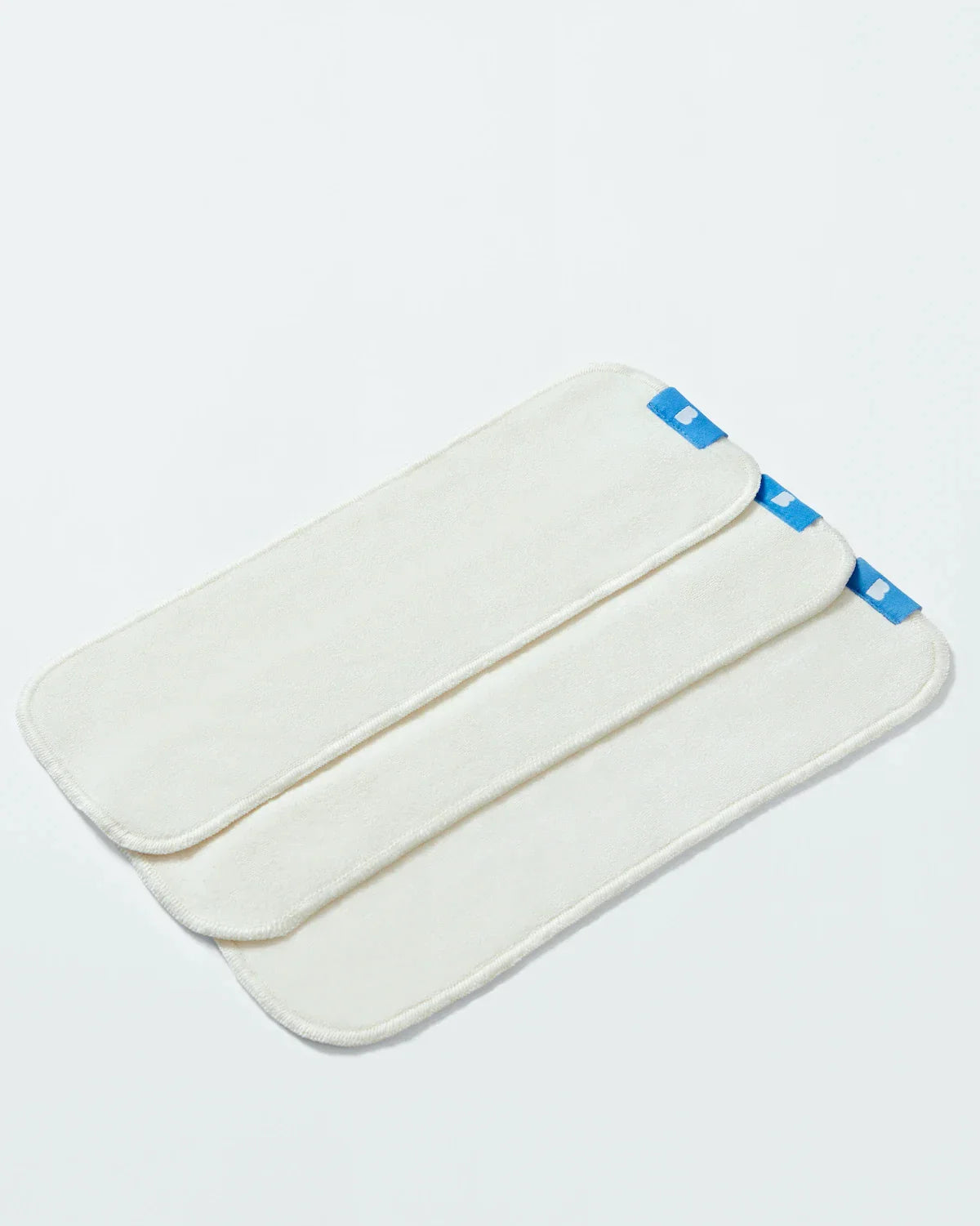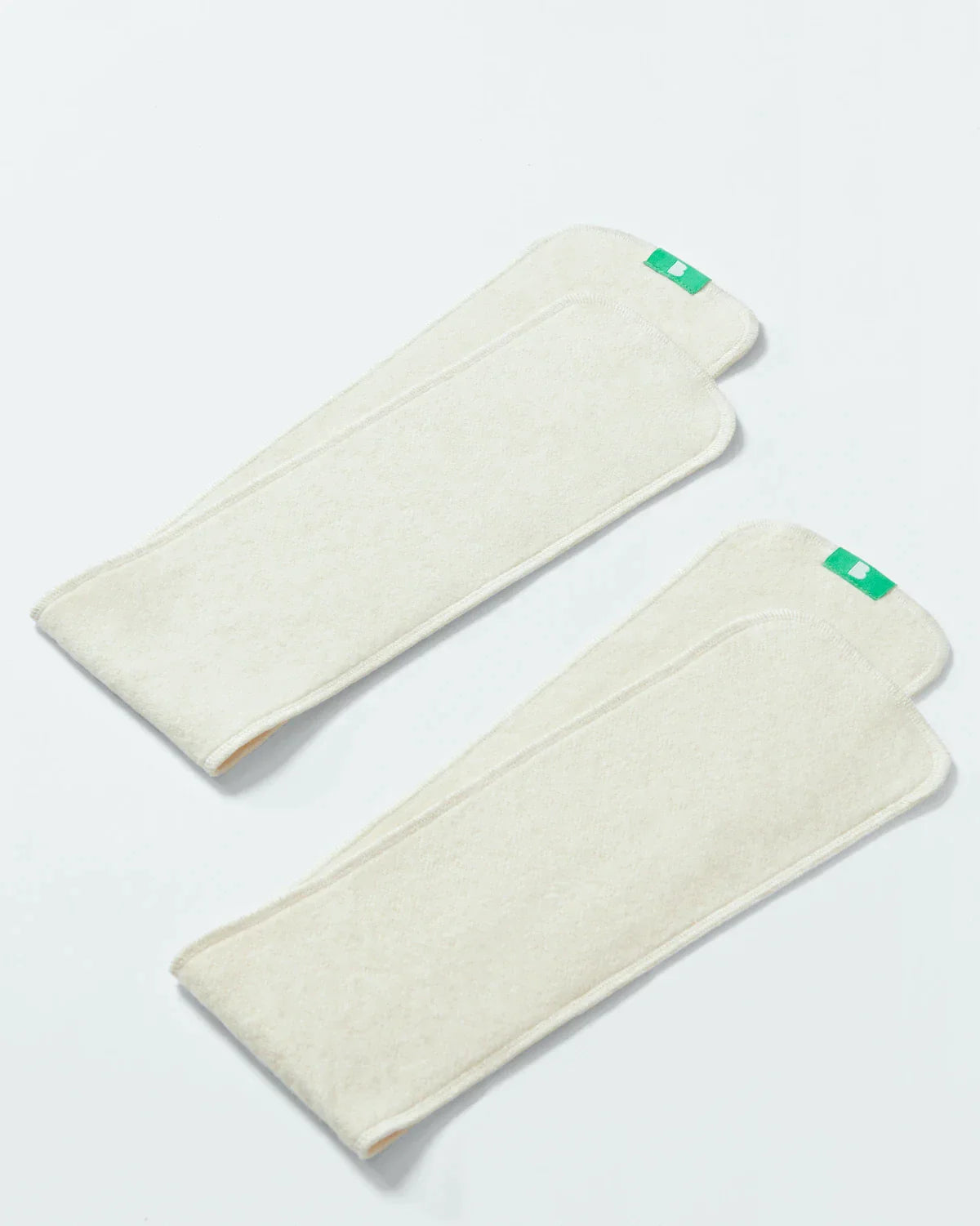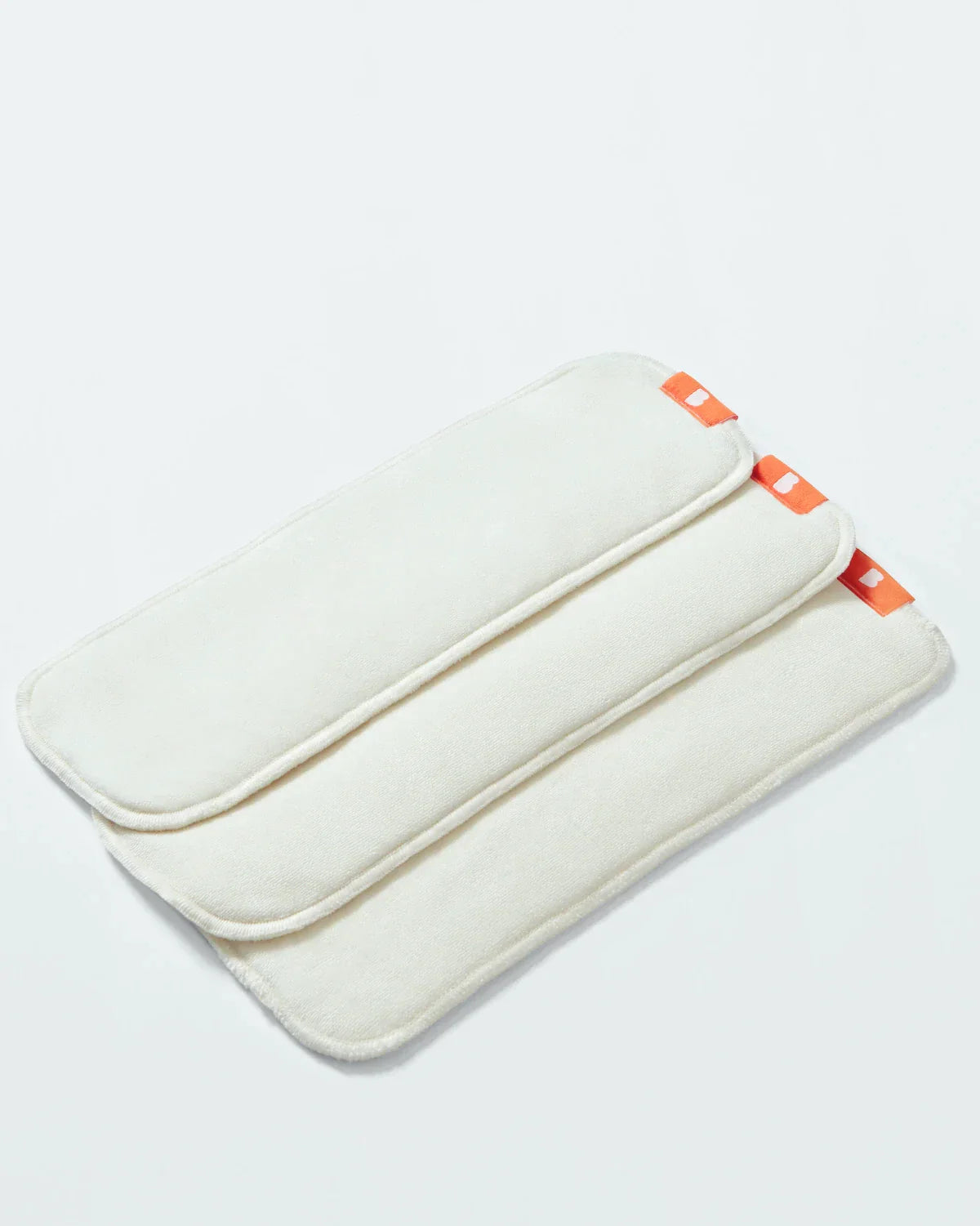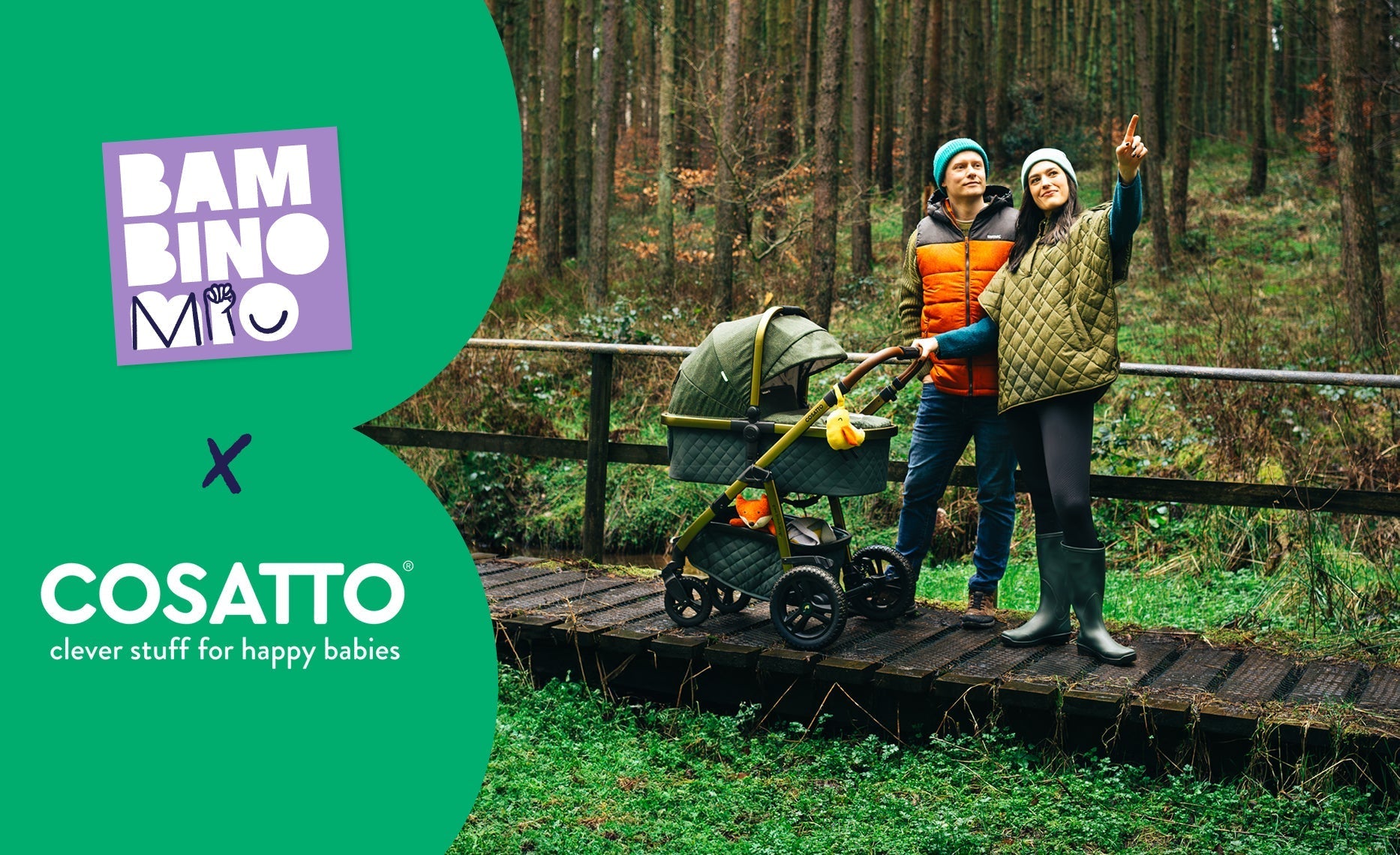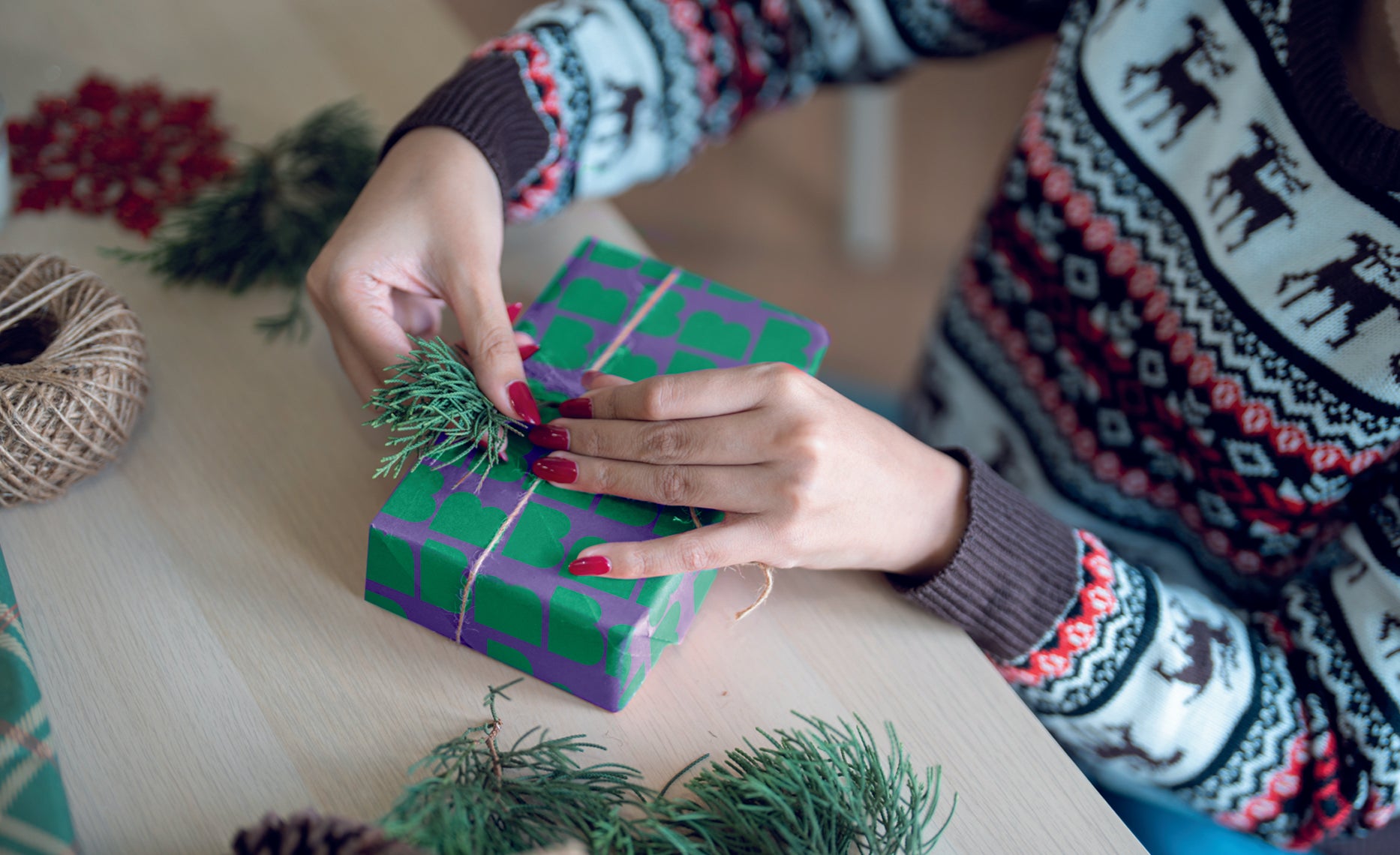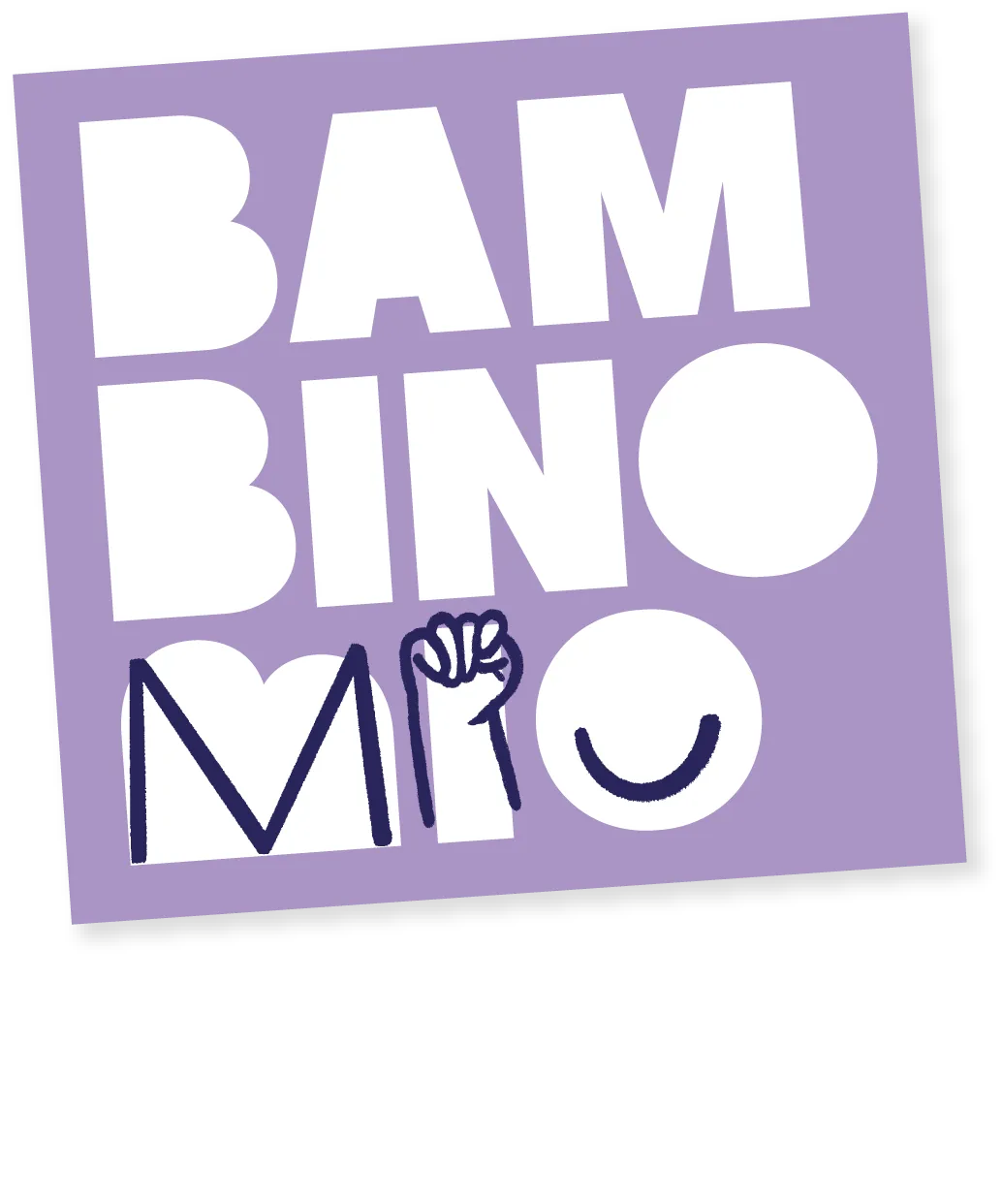Do Reusable Diapers Mean Earlier Potty Training?
Share Options
- SARAH PORTER
- Parent Life Product
- 09 / 10 / 2024
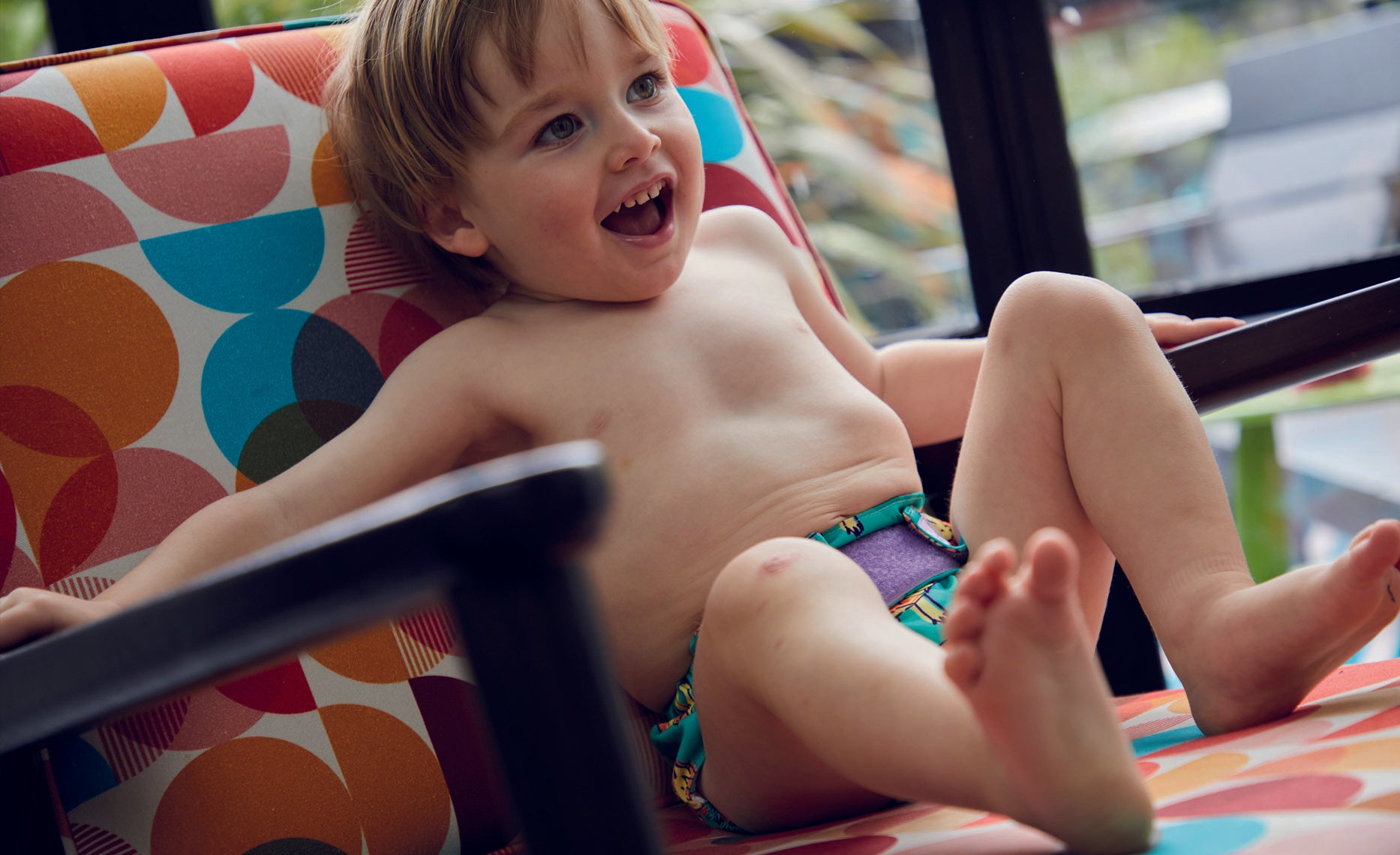
Do children who wear cloth or reusable diapers learn to use the potty and toilet earlier than peers in single-use diapers?
As with many child-related questions, there’s no hard and fast answer as each child is unique and develops at their own pace.
If your cloth-diapered toddler aces their potty training at, say, 27 months, can you say for certain that this is earlier than it’d be if they were in single-use diapers?
Cloth diapers help to speed up potty training - and here's why!
There haven’t been many formal studies done to find out whether cloth diapers speed up the potty training process, but lots of parents and early years caregivers agree that reusables certainly help once it starts.
The fact that the average age by which children are toilet trained has risen (1) in recent decades - since single-use diapers hit the market - offers some indication that there’s a difference between the two types.
There are other factors at play, such as longer working hours for parents and more women working outside the home (2), but cloth diapers do have an effect on potty training for a few reasons.
Reusable diapers help potty training because they feel wet
Just take a look at the ranks of single-use diapers in your local supermarket. Many of them promise a “dry feel”, some have words such as “dry” and “comfort” in their branding.
While this “dry feel” is an appealing feature of single-use diapers, it can get in the way of potty training as your toddler won’t always feel wet after they’ve done a pee.
Being able to feel the wetness of urine in a diaper is a big motivating factor for toddlers as they move towards becoming toilet trained. It tells your child that they’ve done a pee and it also feels unpleasant, offering an incentive for going to the toilet rather than “going” in their diaper.
While cloth diapers shouldn’t feel soggy if they’re changed frequently enough (every two or three hours during the day) they will start to feel damp after a pee or two. It’s this dampness that often encourages children to want to avoid the feeling and then to realize that peeing and pooping in a potty or toilet is the way forward.
Parents using reusable diapers may notice toileting changes sooner
If you’ve been using cloth diapers for a while, you’ll be in the habit of checking your child’s diaper every hour or so, or you’ll notice their signs of discomfort.
You’ll also have got into the habit of changing your child’s diaper every two or three hours and so you’ll probably start seeing dry diapers at change time as soon as this stage starts.
Once your toddler is dry for two or three hours during the day, this means their bladder has grown in capacity (3) and they’re gaining control over their muscles. The growth in bladder capacity and muscle control are good signs that your toddler is ready to start potty training.
Parents using single-use diapers might not change their child’s diaper with the same frequency and so may well miss the start of this “drier” period. It might only delay things by a few peeks, but it’s still a potentially later start for an important stage in development.
Other signs your child is ready to start potty training include:
- They’re able to tell you (whether verbally or in another way) that they need the toilet or that their diaper needs to be changed
- Your child has started to go into a corner or behind furniture to poop or pee in their diaper
- Your child is able to follow instructions such as “go to the bathroom, pull down your pants, sit on the toilet,” and similar
- They’re becoming more independent and want to do things for themselves, such as pulling off a wet diaper and asking to put on a clean one
- Your child is more interested in toilets and potties in general and asks about how to use them, or where the poop and pee goes after you flush
Why does using reusable diapers at night-time help?
Using cloth diapers at night-time helps with potty training because they allow the child to feel wetness more easily, increasing their awareness of when they’ve urinated. This promotes quicker bladder control and a stronger connection between bodily signals and using the potty. Additionally, parents often adopt consistent routines with cloth diapers and may be more motivated to transition away from diapers sooner.
If you're nervous about nighttime leaks, Bambino Mio reusable diapers offer a great solution. They allow for more bespoke absorbency by layering absorbent boosters, so you can tailor the diaper to your child’s specific needs and find the right level of protection.
When is the best time to start potty training?
The best time to start potty training is when your toddler is physically and cognitively ready. If you try potty training your toddler before they’re ready, you can just end up frustrated and distressed, with the bathroom becoming more of a battlefield!
You can start to talk about using the toilet as soon as your child is able to understand and is aware of bodily functions like pooping and peeing, but there’s no need to embark on the full journey until you see some signs of readiness.
From Revolutionary Diapers to Revolutionary Pants
If you think the time is coming for your child to hang up their reusable diapers, don’t worry, as Bambino Mio is still here for you both!
Alongside the move from diaper to toilet, for most toddlers, is accompanied by a move from diapers to training pants.
Training pants are a hybrid between cloth diapers and regular knickers or pants. They’re designed in pretty much the same way as knickers or boys’ underpants but they’re padded and slightly absorbent to catch dribbles or sudden small accidents.
Using training pants to help your toddler conquer the potty
It couldn’t be much simpler. Training pants are as easy to pull on and off as knickers or undies so your toddler can quickly pull them down to use the potty or toilet, before pulling them back up and washing their hands.
With our Revolutionary Reusable potty training pants, there’s no tabs or poppers to confuse small hands at crucial moments. Best of all, they look just like big girl or big boy knickers - just right for that next step into independence.
Citations and References
- ‘Children Are Being Potty Trained a Year Later Than They Were in 2004, Parents Say.’ 2021. Web. inews.co.uk/news/environment/children-are-being-potty-trained-a-year-later-than-they-were-in-2004-yougov-poll-shows-1083869
- UK Government (GOV.UK). ‘Two Million More Women in Work Since 2010, as UK Unemployment Remains Low.’ 2022. Web. gov.uk/government/news/two-million-more-women-in-work-since-2010-as-uk-unemployment-remains-low
- National Health Service (NHS). ‘Self Care: Going to the Toilet.’ Web. nhsggc.org.uk/media/249082/readiness-for-toileting-information.pdf

